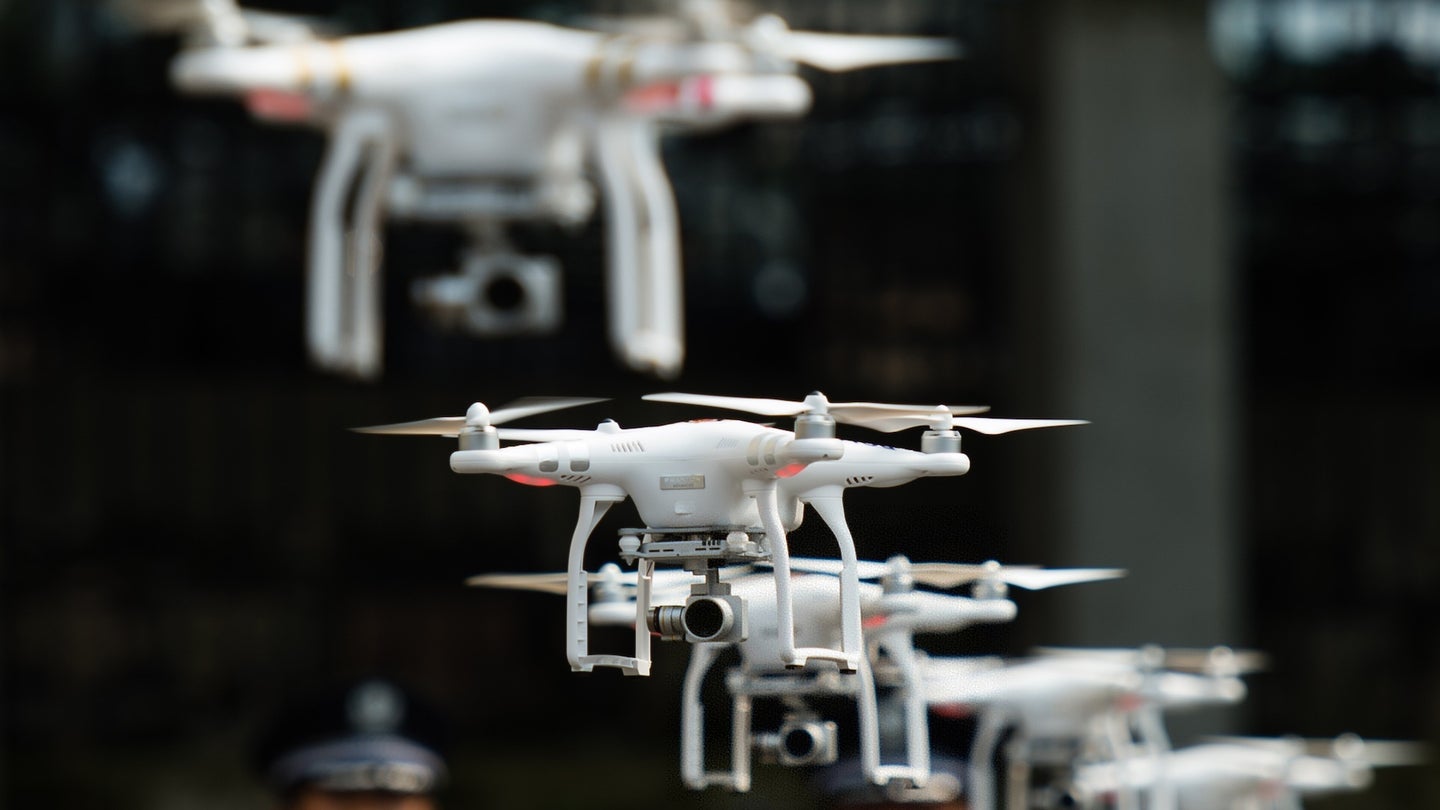Researchers Envision enIoD: An Energy Neutral Internet of Drones
Researchers at the University of Cambridge and KoC University published a paper on a theoretical resilient, self-sustaining drone network of the future.

Last Friday, researchers of the University of Cambridge and KoC University published a paper outlining a drone network they call the Energy Neutral Internet of Drones, which is intended to combat the energy limitations of individual drones by enhancing their connectivity to one another, allowing them to share resources such as power, and thereby creating a self-sustaining, continuously operational fleet. As the paper’s abstract explains, it’s the ever-increasing use of recreational drones that has sparked the need for more surveillance drones, and as the limited battery life and poor intercommunication poses a potential gap in combatting nefariously operated drones, a network like the enIoD would ensure maximum oversight and resources to do so.
Last October, we reported on researchers from Microsoft, Altitude Angel and London Imperial College working together on an 'Internet of Flying Things,' which essentially parallels the efforts of this more recent news. The network they've been working on is an attempt at coalescing all the resources of all the unmanned aerial vehicle (UAV) activity occurring simultaneously, as to provide every single flight operator, manufacturer, local authority, and software developer within the 1-kilometer area in question with all the information they need to maintain a clear, regulated picture of what's occurring over our heads. The enIoD, then, is a similar network, just exclusively for drones, interpersonally. The idea is that drones, themselves, should be able to autonomously support each other. If one surveillance drone is running low on battery, its nearby peers should notice, and whirr off to provide the dying UAV with some energy. This goes for data transfers as well with the ability to share ensuring the survival of any important collected info.
According to Motherboard, the primary motivation here is resiliency. As this enIoD is being developed primarily with security-tasked and surveillance-based operations in mind, a network such as this simply can't afford to be hampered by issues such as battery life or poor communication between UAVs. Hence, these research teams have focused heavily on drones serving and sustaining themselves without the physical assistance of humans. If a drone loses communication with the network (between drones, satellites, stations on the ground, or otherwise), another drone will simply help out and transport the data needed itself. Think of it as a torrent client, if you will, where packets of data are taken from anywhere they can be, continuously, without having to rely on a single user or connection as the only path.
Here's a figure from the published paper in January's IEEE Communications Magazine, in which you can see more clearly how researchers Teng Long, Mustafa Ozger, Oktay Cetinkaya, and Ozgur B. Akan envision their enIoD to be.
As wireless charging is becoming mainstream (see iPhone X), its consideration by drone-tech developers and researchers is growing. According to Motherboard, the enIoD is being envisioned as taking advantage of wireless charging, too, as well as fitting each charging station in the area with solar cells or wind turbines so they can regenerate energy themselves. These charging stations are all linked by the UAVs surrounding them instead of tangible wiring. The best part here is that as long as charging stations are spread intelligently across any given enIoD area, the UAVs can keep flying for as long as they have to, as they’d be wirelessly charged through this network.
Ultimately, while this Energy Neutral Internet of Drones is being motivated by a fear of recreational drones being used for terrorist or otherwise illegal activities, it does impress and is inspiring to behold. We are evolving technologically at a rate unimaginable to the minds of people just a few decades ago, and to see these developments simply fly under the radar every few days goes to show just how much else we’re accomplishing. On the other hand, it does dampen the spirit a bit, to see tech inspired by the depths of human behavior, instead of its soaring potential.
